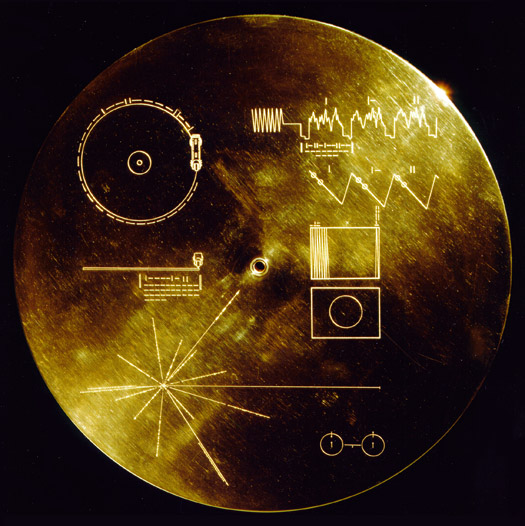Readers who are both familiar with mammoth and the 50 cyborgs project are likely expecting a post arguing that cities are, in fact, cyborgs. It’s true. They are. And I’ll be happy to argue the point in the comments should anyone wish. But at the risk of straying too far from typical mammoth topics, I thought I would leave the strictly architectural behind for a bit, and write about fake cyborgs instead.
If you’re already human, it’s really easy to become a cyborg. (If you’re a machine trying to become a cyborg, it’s a good bit more difficult – but we’ll get there later). Actually, I think that cyborg month has made a compelling case that it’s difficult to not be a cyborg. Problem is, none of us look terribly like cyborgs – like what we want cyborgs to look like.
This paradox has lead to cyborgs trying to look more like cyborgs by faking it.

[via]
Steampunk expresses a desire for technological integration which is different from the norm. More than just fashion, it is a methodology. Bruce Sterling, in a speech about atemporality and the creative artist, offered a hearty defense of appropriating fashion to advocate for your preferred future:
Why not designer fiction as life? Why not role-playing games in real spaces? Why not become the change you want to see?
If, for instance, you think the future should offer ‘personal space flight’ – perhaps you are an enthusiast for that? – why don’t you just dress up as an astronaut? Just invent the whole thing, just go out and carry it onto the streets! Just invent the Jeff Bezos Blue Origin spacecraft, make your own spacecraft suitcases, spacecraft astronaut gear.
Yes, you will look ridiculous. But by what standard? By what standard can you be held to be ridiculous? Why not just go and make yourself a personal public testimony for a future that doesn’t exist? Why not just carry it out with a kind of Gandhian dedication, and see what happens?
If you want a society more frank about its integral reliance on technology, steampunk outfits are a far more affecting means to argue for your technophilic future than, say, a fake bluetooth headset. I wonder, for what sort of minimalist tech future are these folks advocating?
Cyborgs go to far weirder length to fake cyborgism than the merely exuberant steampunk fashion, though. Take, for example,
Kevin Warwick, who made himself famous by implanting a computer chip in his arm, declaring himself an expert in “cybernetics” and figuring out ways to get way too much press for nothing special. The Register, amusingly, dubbed him “Captain Cyborg” and regularly mocked his various exploits. We haven’t heard much about Warwick in a while, but when I saw a bunch of folks chatting about a BBC article concerning the “first human infected with computer virus,” I was immediately reminded of Warwick. Reading through the article, it was no surprise to find out that this “experiment” is actually being conducted by a colleague of Warwick’s, Mark Gasson — who according to Warwick’s own bio lead the research group that Warwick works in.
The story is — as with all captain cyborg stories — a lot less than the headline suggests. Gasson wasn’t “infected with a computer virus.” He took a chip that had a computer virus and stuck it in his arm, just like Warwick has done in the past. The parallels to an actual virus are minimal, and the usefulness for anything is even less than that.
Again – Warwick was, almost certainly, already a cyborg before he stuck a functionless, totally non-cyborg-making computer chip into his arm. But he didn’t get the splash he wanted until he started faking it.
It’s easy to see why the above are examples of faking cyborgism – their additive technology is pastiche, done purely for theater. They have adapted themselves to no environment, enabled no function or performance. But there are other types of fake cyborgs, too.
At the Georgia Institute of Technology, researchers are working on robots which specialize in deception. They are machines, but machines which must be human enough in certain characteristics that they are able to fool other humans.
A robot deceives an enemy soldier by creating a false trail and hiding so that it will not be caught. While this sounds like a scene from one of the Terminator movies, it’s actually the scenario of an experiment conducted by researchers at the Georgia Institute of Technology as part of what is believed to be the first detailed examination of robot deception.
“We have developed algorithms that allow a robot to determine whether it should deceive a human or other intelligent machine and we have designed techniques that help the robot select the best deceptive strategy to reduce its chance of being discovered,” said Ronald Arkin, a Regents professor in the Georgia Tech School of Interactive Computing.
That machine has human and mechanical adaptations, but we wouldn’t call it a cyborg – why? Is it just because it doesn’t have flesh? I believe it goes deeper. Cyborgs start as one thing or another, and become mixed – but it is much easier to go from human to cyborg, than machine to cyborg. Luckily for both of us, Jonah Campbell has already done a fantastic job of elucidating this fact via a dissection of the Terminator‘s cyborg status:
What this gets at, the sort of inadequacy of the flesh+metal equation, is the unspoken role of agency in the ontology of the cyborg. Perhaps agency is too strong a word, but there is the sense that – more than just mildly animate matter – there should be some sort of being, perhaps a living being involved in the cyborg equation. It is not enough for there to be a cobbling-together of animal and machine parts, there needs to be some sort of animus, and why?
Because it’s not interesting otherwise.
Now I’m not necessarily saying that it needs to be a human. I’m open to aliens and cats and whatever being cyborgs, but even that openness betrays a certain prejudice which I will defend for conceptual – if not personal – reasons. That is a prejudice in favour the living, or at the very least, an insistence on the specificity of the biological in its relationship to the cyborg.
Forgive the cliche, but you really need to go read the whole thing, including the comments – they basically wrote the rest of this post for me (they even brought up my two favorite examples of attempted fictional machine-to-man transition: Data from Star Trek and Bicentennial Man). Campbell goes on to wonder: “The biggest question on the mind of every cyborg and every person who is afraid of cyborgs is “how many augmentations before they’re no longer human?” How does that happen? How does one cease to be human?” What I would add to that (and what gets discussed in the comments to the post) is that this also shows the dificulty of a machine becoming a cyborg – how much human needs to be added until robot becomes cyborg? We have little trouble accepting something which starts as fully human, and then is augmented by or phased into the technological. But what of the inverse? If, as Tim argues in the kickoff post, the key to becoming a cyborg is appropriating non-hereditary adaptation, how does this apply to something which has no hereditary adaptation in the first place?
The steampunk has already become a cyborg, and is faking it because it isn’t what they expected. The machine is faking it because it can never be cyborg in the same way that a human can – it can never be an augmented human.
That’s why my favorite fake cyborg is the Voyager Probe. It’s clearly a machine – if you’re a human. But simultaneously, now that its best data-gathering days are behind it, its primary purpose is to serve as an ambassador for humanity to places which likely will have no concept of humanness beyond voyager. Neatly sidestepping the question of humanity embracing the technological as one of our own, it rockets toward those who may not know the difference, a machine which is also the most human being outside our solar system.
[Much thanks to Tim Maly, instigator and curator of the #50cyborgs effort, for help with researching this post, including many of the above links. For more consideration of organically augmented machines, check out Quinn Norton]





[…] This post was mentioned on Twitter by Tim Maly, Qb Gazette Feed. Qb Gazette Feed said: fake cyborgs: Readers who are both familiar with mammoth and the 50 cyborgs project are likely expecting a post ar… http://bit.ly/cyC4XV […]
[…] (of the blog Mammoth), on "Wearable Ethics", Not to be outdone, Rob Holmes on Mammoth blogs about "Fake cyborgs". Then they and forty-eight other transhumanist bloggers all make posts for a 50-post tumblr — see […]